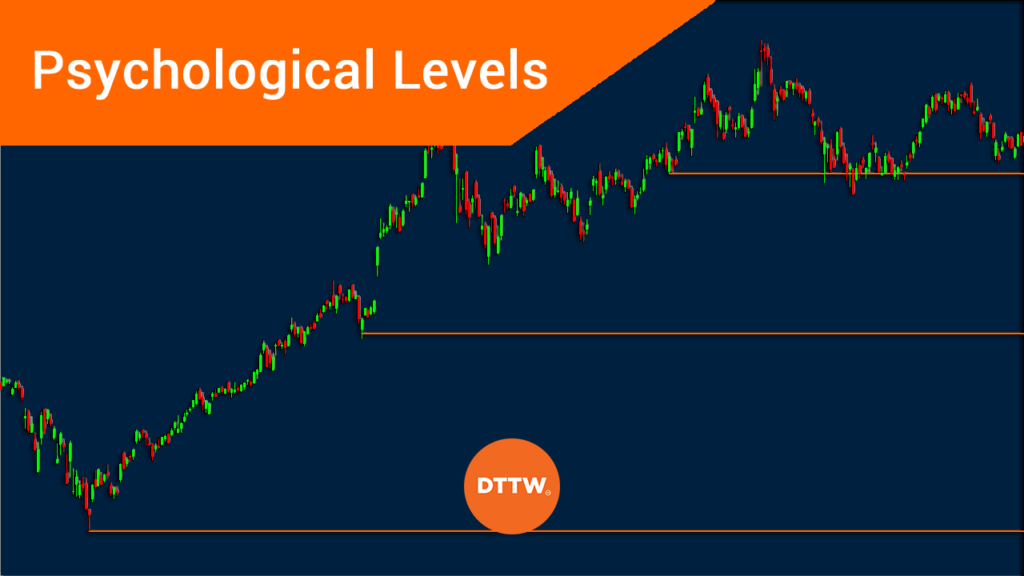
In trading, a psychological level refers to a price level that is not necessarily based on technical analysis but holds significance due to the psychological impact it has on market participants. These levels are often round numbers or key numeric thresholds that traders and investors perceive as important. Psychological levels can act as support or resistance, influencing market behavior as traders make decisions based on these perceived milestones.
Here are some common examples of psychological levels in trading:
- Round Numbers:
- Whole numbers or round figures, such as 1.0000, 100.00, or 50.00, are often considered psychological levels. Traders tend to pay attention to these levels as they are easy to remember and may act as significant points of interest.
- Halfway Points:
- Levels that are halfway between significant milestones, such as 1.5000 or 75.00, are also considered psychological levels. These points may attract attention as traders gauge the market’s sentiment and potential reversal points.
- Century Levels:
- Price levels that end in “00” or “000” are particularly notable. For example, in the EUR/USD currency pair, the level 1.1000 or 1.2000 may have psychological significance.
- Key Fibonacci Levels:
- Certain Fibonacci retracement levels, such as the 50% retracement, are considered psychological levels. Traders often watch these levels for potential reversals or continuation of trends.
Significance of Psychological Levels:
- Liquidity Concentration:
- Psychological levels often attract a concentration of buy and sell orders, leading to increased liquidity at these points. Traders may place orders or take profit around these levels, influencing market dynamics.
- Stop Loss Placement:
- Traders commonly set stop-loss orders or take-profit orders at psychological levels. As a result, these levels can act as points where a surge in buying or selling activity occurs.
- Market Sentiment:
- Psychological levels can impact market sentiment. For example, a currency pair approaching a major round number may see increased volatility as traders assess the significance of breaking or holding that level.
- Behavioral Economics:
- Traders’ decisions are influenced by psychological factors, and round numbers often play into behavioral economics. Traders may exhibit certain biases, such as placing orders at round numbers, leading to self-fulfilling prophecies.
Trading Strategies Involving Psychological Levels:
- Breakout Strategies:
- Traders may employ breakout strategies when a currency pair approaches and breaks through a psychological level. The breakout could signal the potential for a strong trend.
- Reversal Strategies:
- Psychological levels can act as reversal points, and traders might look for signs of a reversal when the price approaches these levels.
- Range Trading:
- In range-bound markets, traders may initiate trades when the price approaches psychological levels, expecting a bounce or a rejection.
Understanding the impact of psychological levels and incorporating them into a trading strategy can enhance a trader’s ability to interpret market behavior and make informed decisions. However, it’s crucial to remember that while psychological levels can be influential, they are one of many factors to consider in comprehensive market analysis.
